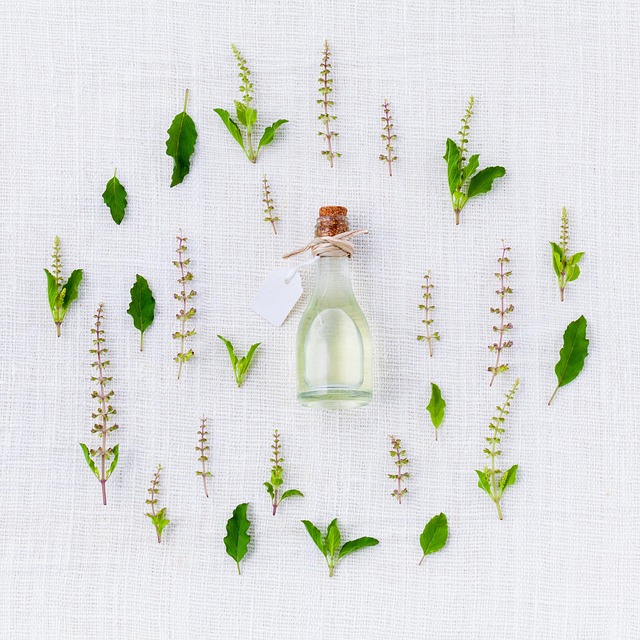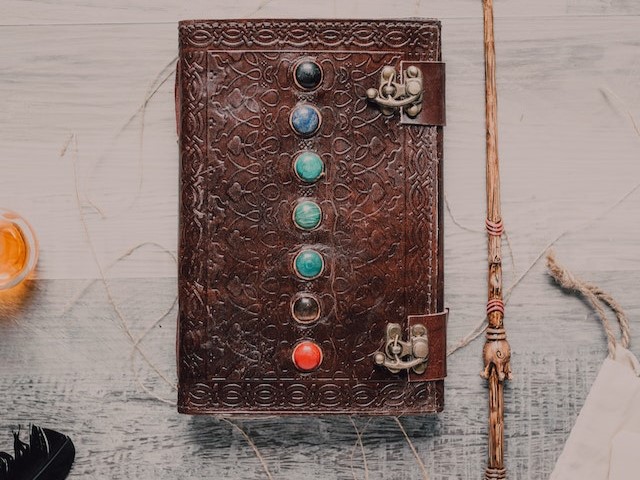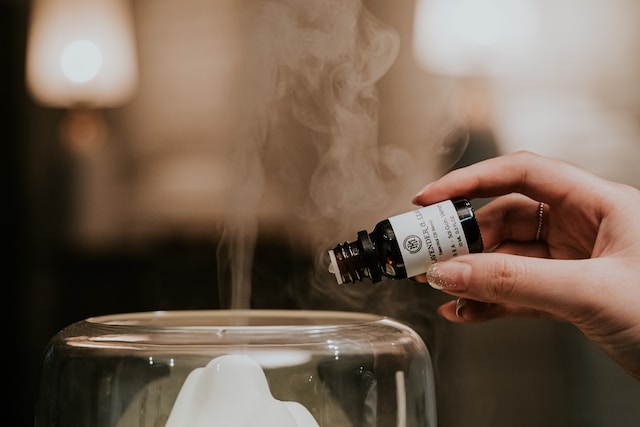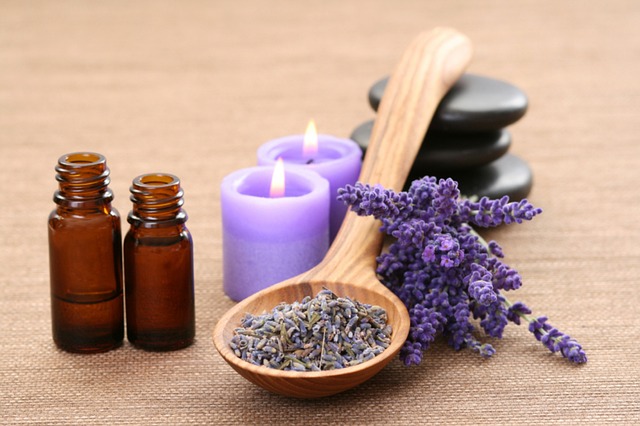Essential Oils For Stress Relief: Using The Healing Powers Of Aromatherapy To Promote Relaxation And Well-Being
There are some affiliate links below, but they are all products I highly recommend. For more info, view my disclosure here.
In today’s fast-paced world, it’s no surprise that stress has become an unwelcome constant in many of our lives. We’re constantly juggling the demands of work, family, and personal well-being, often leaving us feeling overwhelmed and anxious.
But what if there was a simple way to help alleviate some of this stress, promoting relaxation and overall well-being? Enter the world of aromatherapy – a natural solution to help combat stress using essential oils.
If you’ve never explored the benefits of essential oils before, you’re in for a treat. These potent plant extracts have been used for centuries as natural remedies for various ailments, including stress relief.
By harnessing the healing powers of aromatherapy, you can transform your environment into a calming oasis that promotes relaxation and mental clarity.
We’ll dive into the science behind essential oils and their stress-relieving properties, as well as provide guidance on incorporating them into your daily routine for optimal results.
So sit back, take a deep breath, and let’s embark on this journey towards greater relaxation together!
The Science Behind Aromatherapy
Aromatherapy has been used for centuries as a natural way to promote relaxation and well-being. But what exactly is it about these aromatic essential oils that makes them so effective in combating stress?
The science behind aromatherapy lies in the power of scent and its ability to influence our emotions and overall mental state. When we inhale the aroma of an essential oil, the olfactory system in our brain is triggered, sending signals to various parts of our body.
The olfactory system is closely connected to the limbic system, which plays a crucial role in regulating emotions, memory, and mood. It’s no wonder that certain scents can evoke strong emotional responses or memories.
For example, the smell of freshly baked cookies might bring back fond memories of baking with your grandmother during childhood holidays. Similarly, essential oils used in aromatherapy can have a profound impact on our emotional well-being by stimulating the limbic system through scent.
When it comes to stress relief, certain essential oils are believed to have calming effects on the mind and body. Lavender oil is one such example that has been widely studied for its ability to reduce anxiety and promote relaxation.
In a study conducted by researchers at Kagoshima University in Japan, they found that lavender essential oil significantly decreased cortisol levels (a hormone associated with stress) in participants who were exposed to stressful conditions. This suggests that using lavender oil could be an effective way to manage stress and improve overall mental health.
So how exactly do you incorporate aromatherapy into your daily routine for stress relief? One popular method is through diffusion, where essential oils are dispersed into the air via a diffuser or humidifier.
Another option is adding a few drops of your chosen oil into a warm bath or onto your pillow before bedtime. You could also try applying diluted oils directly onto your skin through massage or by using roll-on applicators.
Whichever method you choose, incorporating aromatherapy into your self-care routine can be a natural and effective way to combat stress and promote overall well-being.
Popular Stress-Relieving Essential Oils
Now that we have delved into the scientific aspects of aromatherapy, let us explore some popular stress-relieving essential oils. These oils are known for their therapeutic properties and can significantly contribute to your relaxation routine. Incorporating these essential oils into your self-care practices can provide a natural way to alleviate stress and promote overall well-being.
Lavender is perhaps the most well-known essential oil when it comes to stress relief. Its calming scent has been shown to lower heart rate, blood pressure, and cortisol levels, which are all indicators of stress. In addition to its relaxation benefits, lavender is also commonly used for improving sleep quality and aiding in insomnia.
To enjoy the soothing effects of lavender oil, you can diffuse it in your living space or apply diluted drops onto your pulse points, such as wrists and temples.
Another popular choice for stress relief is chamomile essential oil. Known for its calming properties, chamomile has been used for centuries as a natural remedy for anxiety and restlessness. Recent studies have confirmed that inhaling chamomile vapors can help reduce symptoms of depression and anxiety disorders by modulating neurotransmitter activity in the brain.
You can use chamomile oil in a diffuser or add a few drops to a warm bath before bedtime to soak away your worries.
Bergamot is another powerful essential oil that helps combat stress and anxiety. Extracted from the bergamot orange fruit’s rind, this citrusy scent has been proven to reduce cortisol levels, thus promoting relaxation and reducing feelings of tension. Its uplifting aroma can also help improve mood and increase energy levels during periods of fatigue or burnout.
To experience bergamot’s benefits, consider diffusing it throughout your home or office or adding it to an unscented lotion for topical application.
Methods Of Essential Oil Application
So, you’ve got your essential oils ready to combat stress and promote relaxation, but how exactly do you use them? Fear not, because there are several methods of essential oil application that cater to a variety of preferences and situations. Whether you’re new to aromatherapy or an experienced user, these techniques will help you harness the power of essential oils to enhance your well-being.
One popular method is through diffusion, which involves dispersing the essential oil molecules into the air. This can be achieved using a variety of devices such as ultrasonic diffusers, nebulizers or even a simple bowl of steaming water with a few drops of your chosen oil. Breathing in the aromatic vapors allows the therapeutic properties to enter your respiratory system and eventually make their way to your bloodstream. Diffusion is particularly effective for stress relief as it creates a calming atmosphere in your living or work space.
Topical application is another fantastic way to experience the benefits of essential oils. By diluting them with a carrier oil – like coconut or almond oil – and applying directly onto your skin, the healing properties are absorbed into your bloodstream through your skin’s surface. Target areas such as temples, wrists, and behind the ears for maximum effect. You can also add a few drops of oil into a warm bath for full-body relaxation or incorporate them into massage therapy for an enhanced therapeutic experience.
A lesser-known method, but still highly effective, is internal consumption – although this must be done with extreme caution and only under the guidance of a certified aromatherapist or healthcare professional. Certain food-grade essential oils can be ingested by adding them to water, tea, or used in cooking recipes like salad dressings and desserts. This allows for direct absorption into your digestive system providing targeted stress relief from within. Remember: less is more when it comes to internal consumption – too much can lead to unpleasant side effects.
Creating A Calming Atmosphere
Now that we’ve explored the various methods of essential oil application, it’s time to focus on how to create a calming atmosphere using these potent plant essences. The right environment can significantly augment the soothing effects of essential oils, transforming your space into a sanctuary for relaxation and well-being.
One simple way to create a tranquil ambiance is by using an aromatherapy diffuser in your home or workspace. Diffusers come in various styles and functions, but they all share the primary goal of dispersing essential oil particles into the air for inhalation. As you breathe in these delicate scents, your olfactory system sends signals to your brain that help alleviate stress and promote relaxation.
Choose an essential oil blend specifically formulated for stress relief or experiment with single oils such as lavender, chamomile, or bergamot to find your perfect calming combination.
Aside from diffusing essential oils, another effective technique for creating a serene environment is incorporating them into your daily rituals. For instance, adding a few drops of lavender oil to your bathwater can transform an ordinary soak into a luxurious spa-like experience. Alternatively, you can create a custom massage oil by blending carrier oil like grapeseed or almond with stress-relieving essential oils such as ylang-ylang or frankincense. Massaging this mixture gently onto your skin not only allows you to absorb the therapeutic properties through dermal contact but also engages multiple senses as you inhale the calming aroma.
Lastly, don’t underestimate the power of visually appealing elements when designing a soothing atmosphere. Consider incorporating natural materials like wood and stone in your décor and surrounding yourself with houseplants that purify the air while simultaneously providing visual tranquility. Soft lighting from candles or salt lamps can also contribute to creating an inviting space that encourages relaxation and stress relief.
By combining these aesthetic touches with the healing powers of aromatherapy, you’ll be well on your way to cultivating an oasis of calm in your everyday life.
Incorporating Aromatherapy Into Your Daily Routine
Incorporating aromatherapy into your daily routine can be a game changer when it comes to stress relief and overall well-being. There are countless ways to add the healing powers of essential oils to your day, making it easy to find methods that suit your individual needs and preferences. By regularly using these natural remedies, you’ll create a more balanced and peaceful environment for yourself.
One way to incorporate aromatherapy into your daily routine is through the use of diffusers. Diffusers are devices that disperse essential oils into the air, allowing you to breathe in their therapeutic properties. Place a diffuser in a central location of your home or office, and experiment with different oil blends depending on your mood or needs at the time.
For example, try lavender for relaxation, peppermint for mental clarity, or eucalyptus for respiratory support. Another method is through topical application. Many essential oils can be applied directly onto the skin when diluted with a carrier oil such as coconut or jojoba oil. This allows the therapeutic properties of the oils to absorb into your bloodstream for targeted relief.
Apply diluted essential oils to pulse points like wrists, temples, or behind the ears for stress relief throughout the day. You may also want to consider incorporating essential oils into your skincare routine by adding a few drops of soothing chamomile or antioxidant-rich frankincense oil to your favorite moisturizer.
Don’t forget about other creative ways you can use aromatherapy in your everyday life! Try adding a few drops of essential oil to unscented candles or laundry detergent for an added touch of relaxation and comfort. Consider taking an aromatic bath by mixing Epsom salts with calming lavender oil or invigorating eucalyptus oil – not only will this provide stress relief through aroma but also help soothe tired muscles after a long day.
The possibilities are endless when it comes to integrating these powerful natural tools into your daily routine.
Safety Precautions And Considerations
Imagine a warm, fragrant bubble bath or a soothing massage, the scents of lavender and eucalyptus filling the air as you sink deeper into relaxation. Essential oils can indeed work wonders for stress relief and well-being. However, as with any powerful tool, be aware of safety precautions and considerations when using essential oils for aromatherapy.
Always dilute essential oils before applying them to your skin. Pure essential oils are highly concentrated and can cause skin irritation or even burns if used undiluted. To ensure safe usage, mix a few drops of your chosen oil with a carrier oil like coconut, almond, or jojoba oil. This not only protects your skin but also helps the oil absorb better for maximum benefits.
Next, be mindful of potential allergies or sensitivities to certain essential oils. If you’re new to aromatherapy, start by doing a patch test on a small area of skin to check for any adverse reactions. In addition, some essential oils may interact with medications or have contraindications for certain health conditions. It’s always best to consult with a healthcare professional before incorporating essential oils into your wellness routine.
Lastly, use quality essential oils from reputable sources to ensure that they are pure and safe for therapeutic use. Low-quality products may contain synthetic additives or be adulterated with other substances that could diminish their effectiveness or pose risks to your health.
By following these safety precautions and considering the specific needs of your body and mind, you can harness the power of aromatherapy to enhance relaxation and overall well-being in a safe and effective manner.
Expanding Your Aromatherapy Toolkit
Having discussed the importance of safety precautions and considerations, let’s now venture into another crucial aspect of stress-relief aromatherapy: expanding your toolkit.
As you become more proficient in using essential oils for relaxation and well-being, you might want to broaden your horizons by trying different oil combinations or incorporating additional tools and techniques.
One fantastic way to enhance your aromatherapy experience is by exploring carrier oils. Carrier oils are extracted from various plants, nuts, or seeds and can be used to dilute essential oils before applying them to the skin. Some popular carrier oils include almond oil, jojoba oil, grapeseed oil, and coconut oil.
Each carrier oil has unique properties that can benefit your skin and overall health while also complementing the therapeutic effects of essential oils.
Another technique to expand your aromatherapy practice is blending essential oils for synergistic effects. Combining two or more essential oils creates a new aroma profile that may offer added benefits not found in individual oils alone.
For instance, blending lavender with chamomile promotes deep relaxation, while combining peppermint with eucalyptus aids in respiratory support. As you experiment with various blends, take note of which combinations work best for your specific needs.
As you continue on this aromatic journey, consider investing in an ultrasonic diffuser if you haven’t already done so. These devices use water and ultrasonic vibrations to create a fine mist that disperses essential oils into the air for inhalation.
A diffuser allows you to enjoy the benefits of essential oils without applying them directly to your skin or relying solely on personal inhalers. Plus, it helps maintain a pleasant atmosphere in your space by adding moisture and emitting soothing scents throughout the day or night.
With an expanded toolkit at hand, you’ll be better equipped to harness the power of aromatherapy effectively for stress relief and overall well-being.
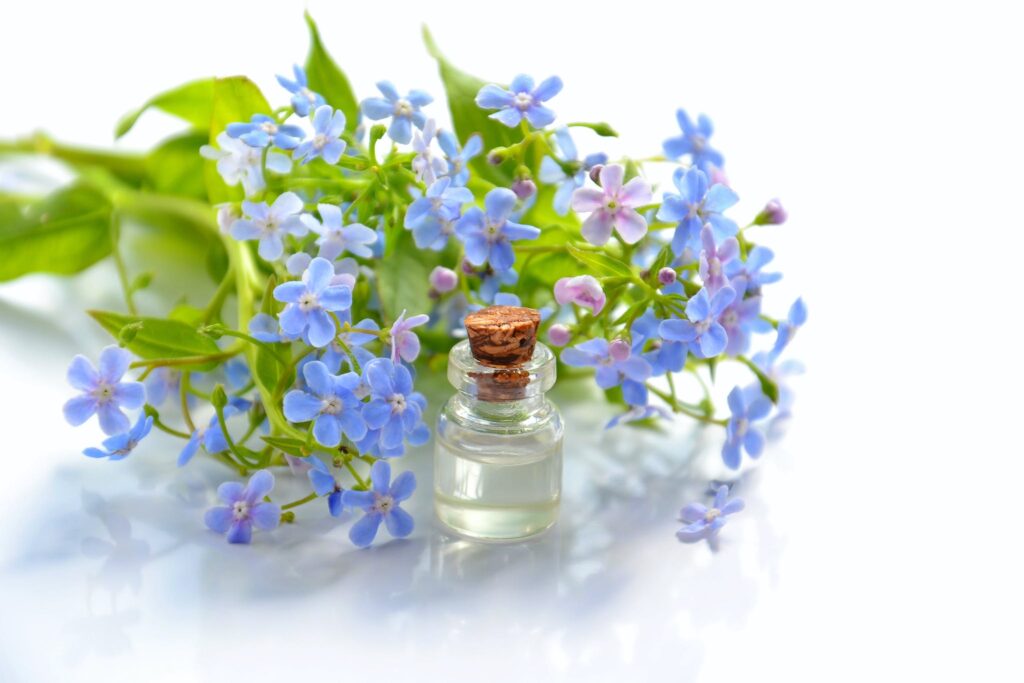
Conclusion
Incorporating essential oils into your daily routine can greatly improve your overall well-being and stress levels.
By understanding the science behind aromatherapy and utilizing popular stress-relieving oils, you can create a calming atmosphere that promotes relaxation.
Remember to always follow safety precautions and consider expanding your aromatherapy toolkit to further enhance your experience.
Give it a try and discover the healing powers of aromatherapy for yourself!

